Clothes Make the (Victorian) Man
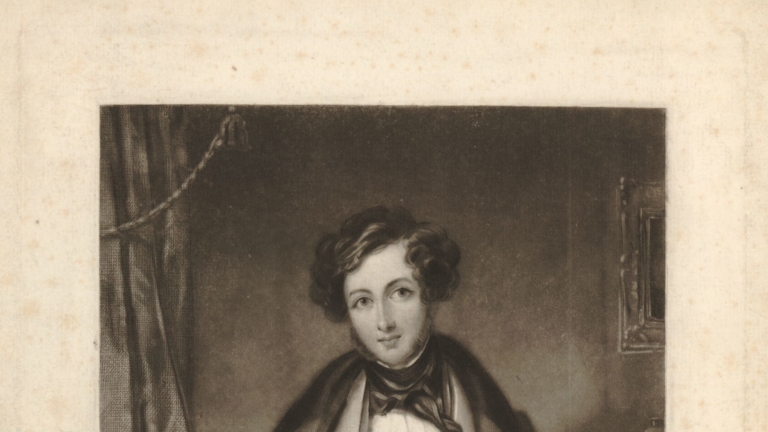
by Rydell Downward. Updated from the original publication in the September/October 2010 issue of Finery.
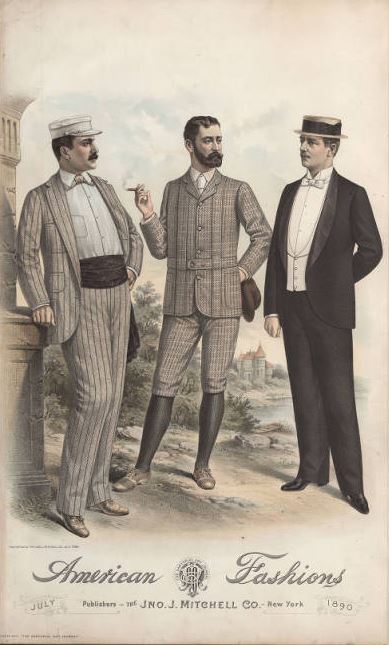
The Victorian era spans the years 1837-1901. Fashions changed continually and drastically over that period, so there isn’t any one “Victorian” style, but there were consistent principles throughout the era. The ideal men’s silhouette was highly structured, stylized and unnatural to the modern eye; it was cut and padded to exaggerate the chest, narrow the waist, broaden the shoulders, elongate the neck and narrow the legs. Your outfit should reflect the status, income and personality of the persona you portray. A humble dock worker wants something to can work in and get dirty. A clerk needs decent, serviceable, and understated clothing. Flamboyant upper class nobs require the latest fashionable tailoring and accessories.
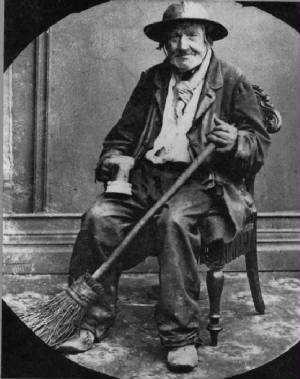
There are three chief styles of jacket worn: the frock, a knee-length, all-purpose coat; the morning coat or swallowtail, worn as daywear with a waistline that gradually slopes away to the rear; and the tail coat, worn either as day or formal wear. The formal styles are more structured, more finely cut and likely to have silk, velvet and other fripperies. Short versions of all of these coats were worn, especially by working folks who needed the tails and skirts out of the way. All coats may be single or double breasted, and were made of wool broadcloth in deep, sober colors. Coats were cut to narrow the waist and pull back and broaden the shoulders. Frock coats were cut generously in the back of the skirts. If possible, avoid purchasing modern formal tail coats, as the waistlines are cut with a heavily diagonal line inappropriate for the era. It’s virtually impossible to alter them to the proper silhouette.
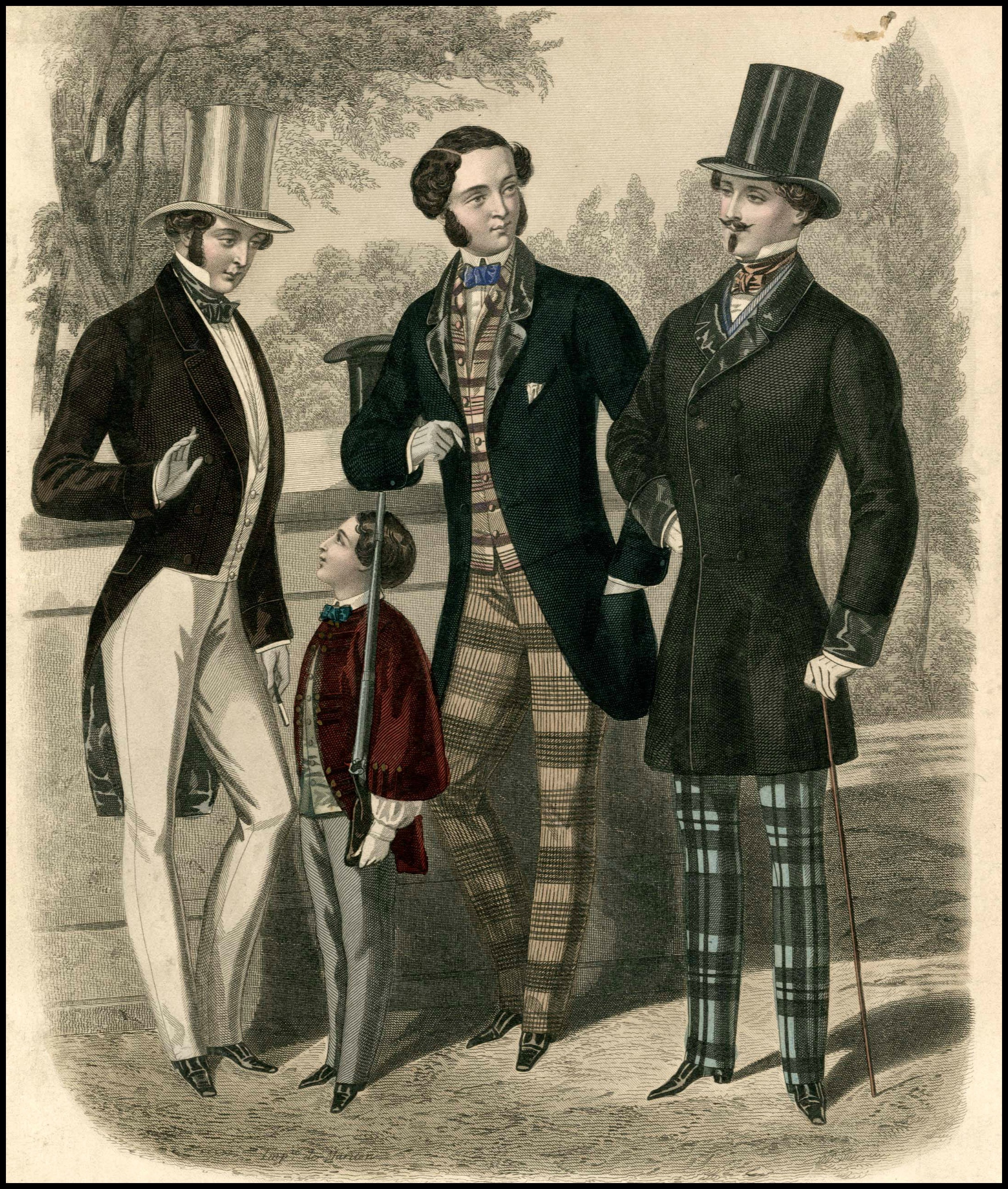
Trousers should be made of corduroy or wool: solid, striped, plaid, houndstooth, or herringbone. The legs should narrow towards the ankle. There should be no crease down the front and, most importantly, the waistband should be up around the natural waist, somewhere near of the navel. The waistband should not be visible below the waistcoat. If you have a broad belly, the trousers should begin above it, not below it. Trousers should be secured by suspenders, not a belt. By the mid-Victorian period the drop-fly had been replaced by the concealed button-fly. If you are altering a modern pair of trousers, make sure the waistline is high enough and take in the side seams below the knee. If they have a crease, press it out. Remove any visible pockets and belt loops.

Waistcoats may be simple or showy, double or single-breasted, and made of any number of fabrics: wool, silk, brocade, velvet, etc. Even though most of the Victorian outfit is somewhat staid, men could express themselves in their choices of waistcoat. It should be long enough to conceal the waistline of the trousers, have some form of collar and be cut straight across the waist. In general, the cut and collar of your waistcoat should echo the jacket: single breasted vests with single breasted jackets, etc. Modern vests lack collars and invariably have a deep, wide “W” at the waistline. A cheap “cheat” may be achieved by cutting the “W” off and using those pieces as the collar on the front, and finishing the upper part of the collar with a matching velvet or silk.
Your shirt will show at the collar, the cuffs and in the front gap of your waistcoat. The cuffs should extend slightly beyond the cuff of your jacket. Any visible buttons should be studs or cufflinks. The shirt collar should be about three inches tall and be angled slightly backwards towards the ear when standing. Simply turning a modern collar up doesn’t work – they’re angled in the wrong direction and the ends will cross. Furthermore, the unsightly casings for the collar stays will show. It’s best to remove the collar and attach a new one, or purchase one which can be attached to a collarless shirt. Modern formal shirt collars are not tall enough; replace them with longer ones. If you wear a low-cut waistcoat, make sure that your shirt has a decorative front, with a texture or pleating, and fastens with studs.
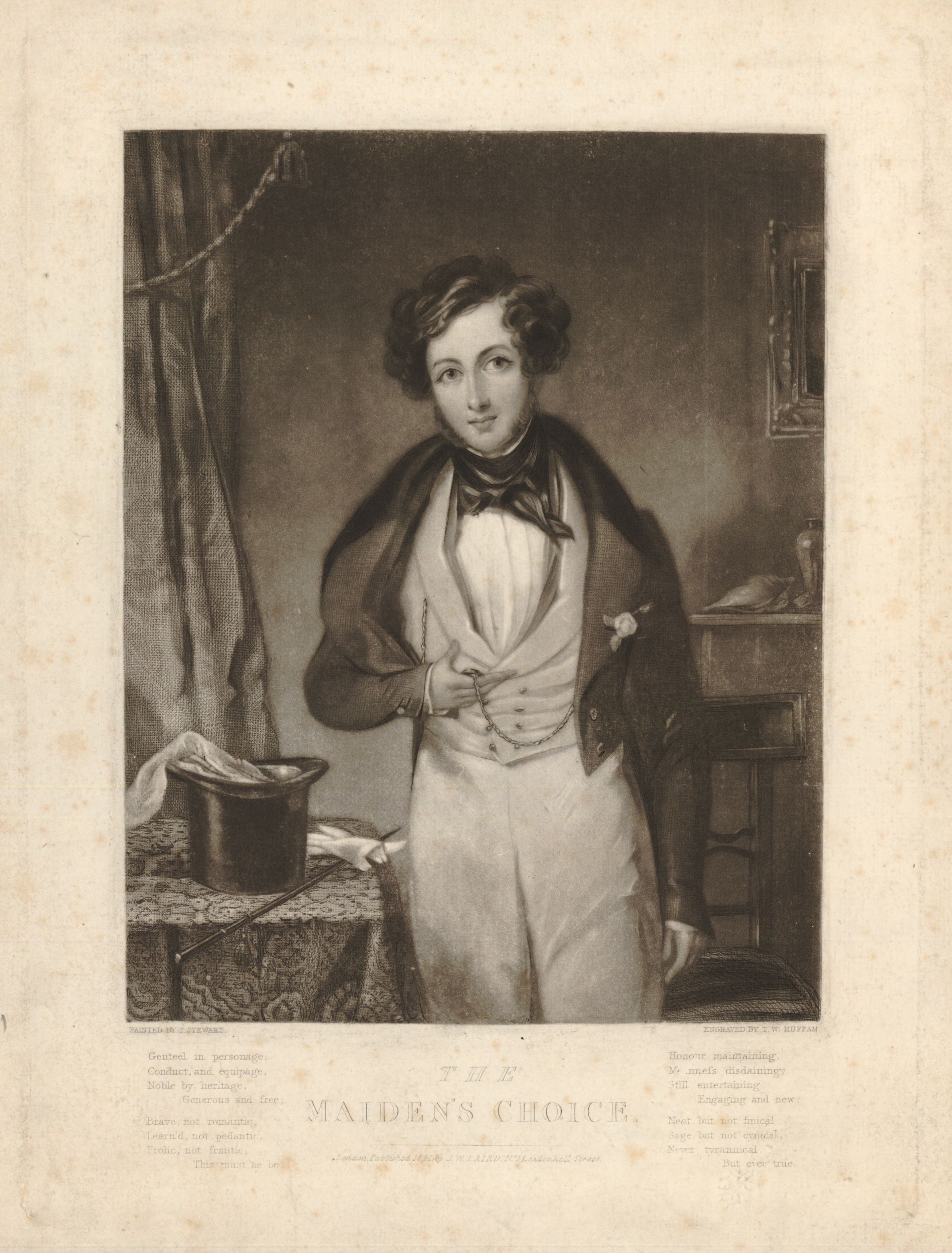
Every man wore something around his neck. Even period illustrations of destitutes depicted them wearing some kind of neckwear, however rumpled and worn. Your cravat should be made of silk, cotton, linen or any other natural fiber, and should have some body and a little “bite” so it can hold a knot. As with the waistcoat, your cravat may be as expressive as you and your persona like. The cravat should not be wider than your collar, and should be long enough to wrap around your neck from the front to the back and around to the front again, and have enough left over for your desired knot – and no more. There are three chief knots used. The Bow is the same as a modern bow tie. The ends and the loops should be the same length. The Plastron or Ascot (see illustration) doesn’t yield a bow, but an attractive knot, leaving the cravat ends to be folded over one another and pinned or left short and allowed to stick out. They may even be wrapped around to the back and pinned there. The Four-in-Hand is similar to the modern Windsor knot. It should be tied with the knot slightly horizontally wrinkled, and the ends decorated with a pin to keep it tied and in place. Not advised if you are wearing a low cut waistcoat, with which only a bow tie is worn. You may also wear a plain, dark-colored band, fastened in the back. You can make pre-tied cravats which fasten in the back. The Victorians certainly did. Modern fake bow ties, made for collars only an inch thick, are too narrow; you’ll want something more substantial.
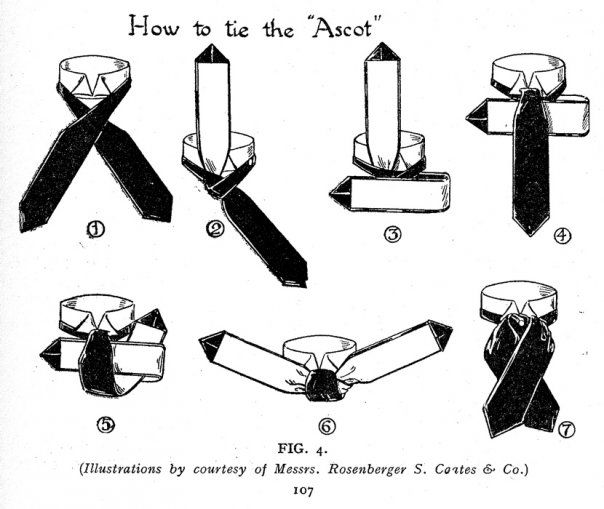
Overcoats and capes are essential for winter wear. Modern overcoats lack the necessary fullness in the skirts and back, but vintage military overcoats often have the proper details. A long cloak, perhaps with one or more tiers, looks splendid. Consider also an overcoat with a cape attached to the shoulders.
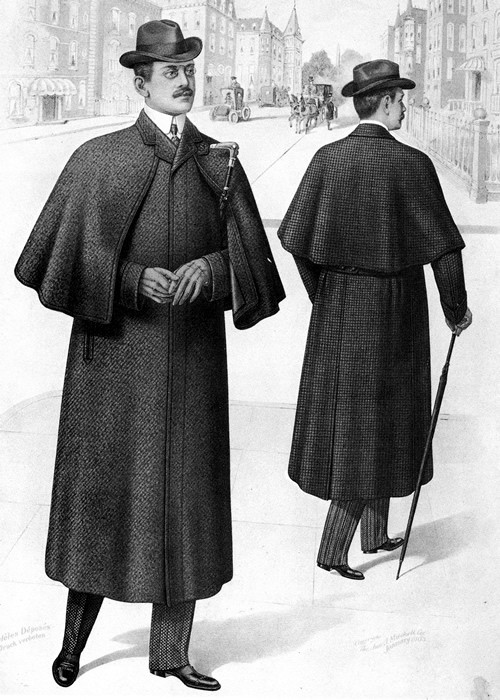
Appropriate hats are toppers and bowlers. Very tall, cylindrical toppers make for a very period look. Good period shoes are plain, round-toed Oxfords or short boots that button up the sides. If you wear tall riding boots, make sure that your trousers are cut to be tucked into them rather than stuffed. Your outfit is not complete unless it is adequately accessorized: Gloves, walking sticks, watch fobs, monocles, calling card cases, handkerchiefs, muffs, and scarves were only a few of the accessories worn.
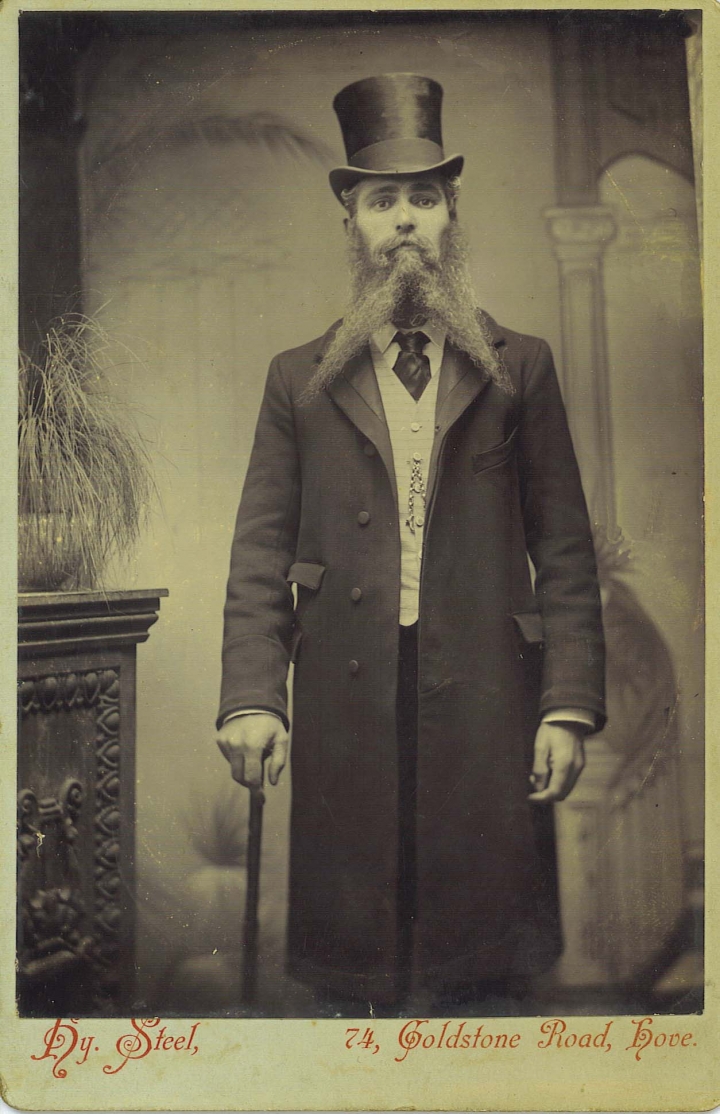
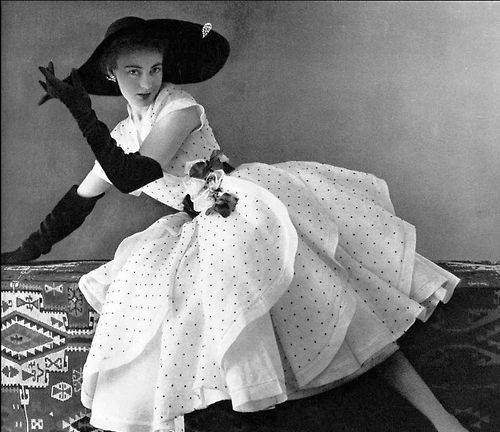
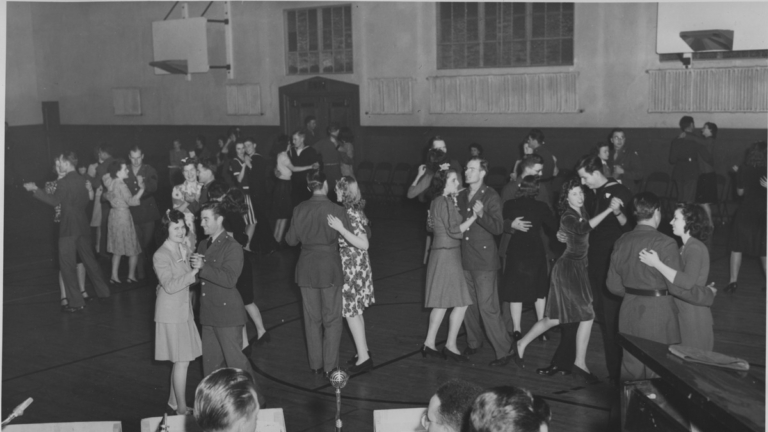
Yorkman Lowe
About dress shirts:\
Because of the cut, one cannot convert a present-day dress shirt to a Victorian/Edwardian neckband shirt by simply removing the collar. Instead, neckband formal shirts are sold by Brooks Bros. More affordably, try:
West Coast Church Supplies
369 Grand Ave
South SF 94080
650 583 5153
800 767 0660
http://www.westcoastchurchsupplies.com
Ask for white long-sleeve neckband or ‘Friar Tuck’ shirt.
and
C M Almy
Old Greenwich CT
http://www.almy.com/Category/ClergyShirts/parent/ClergyApparel-Man
800 225 2569
and
Decades of Fashion
1653 Haight St (at Belvedere, SW corner)
San Francisco
415 551-1653
http://www.decadesoffashionsf.com
and
Gentlemen’s Emporium
San Jose
(mail, internet, and phone orders only)
http://www.gentlemansemporium.com/store/001575.php
800 997 4311
————————————————
Collars are available at:
http://www.brooksbrothers.com/Detachable-Collar/112E________WHIT_19_______,default,pd.html?src=googleshopping&cmp=ppc_us_GG_pla_AllProducts
and
Men’s Furnishings
HARROD’s
Knightsbridge
London W1
http://www.Harrods.com
and
http://www.darcyclothing.co.uk — a collar manufacturer in England
and
A limited selection at:
Gentlemen’s Emporium
San Jose
800 997 4311
http://www.gentlemansemporium.com
(mail, online, and phone orders only, no physical store)
I don’t know their quality.
and
Amazon Dry Goods
Davenport IA
and
Decades of Fashion
1653 Haight & Belvedere, SW corner
Haight-Ashbury district, SF
415 551 1653
Decadesoffashionsf.com
and
Vintage Blue Moon
(Robert & Kristi Alvarez)
http://www.vintagebluemoon.com
vintagebluemoon@yahoo.com
909 240 8506
————————————————————————
COLLAR BUTTONS, also called COLLAR STUDS
Attach the collar to the shirt: a short one in rear, a long one in front, since it must go thru 4 layers of fabric. Usually metal but sometimes plastic. Available at many vintage clothing dealers, including:
Decades of Fashion — see above
Gentlemen’s Emporium — see above
Please ensure that the front button is long enough.
Also C M Almy — see above
Brooks Brothers in SF may have collar buttons.
Tamala Motta
Yorkman,
Thank you so much for the tips as to where to find collars and collar studs. I often shop for my friend and am not as knowledgeable on men’s Victorian fashion or where I’d even go. Would you know where I could get decent quality short trousers (I’m sure there’s another term for these) and any additional men’s clothing, Victorian and earlier?
Yorkman Lowe
Sorry I can’t help on that.
Did I send you my full essay on collars? If you want it, please email me at yorkmanlowe@gmail.com